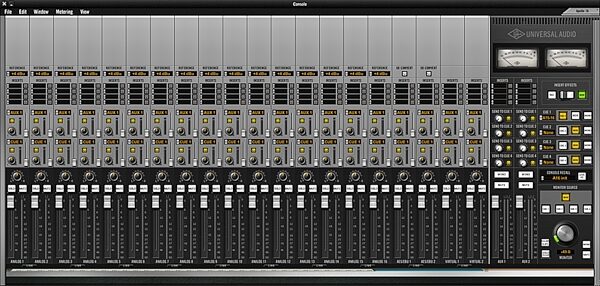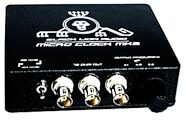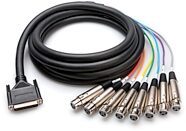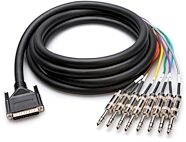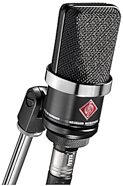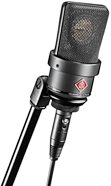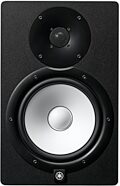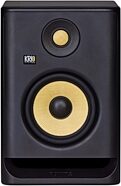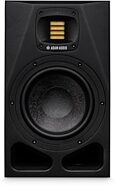
Universal Audio Apollo X16 Thunderbolt 3 Audio Interface
Ideal for studios with analog consoles or outboard mic preamps, the Apollo X16 offers 16x16 analog line I/O, plus HEXA processing for all your UAD plug-ins.
$3,999.00
Interest-Free Payment Plans
Universal Audio Apollo 16 Thunderbolt Audio Interface
No longer available at zZounds




Record 16 analog inputs over FireWire or Thunderbolt. Mix and monitor with classic UAD plug-ins. The Universal Audio Apollo 16 interface lets you do it all.
Overview
Ideal for hybrid digital/analog recording studios, the Universal Audio Apollo 16 FireWire/Thunderbolt-ready audio interface features 16 analog ins matched by 16 analog outs -- twice the analog I/O of the original Apollo interface. With 16 analog ins and outs sailing into your DAW via UA's pristine 192 kHz/24-bit conversion, you can stack two or more Apollo 16s to build a huge multitrack studio. Best of all, the Apollo 16 gives you powerful onboard UAD-2 QUAD real-time processing through Universal Audio's range of classic UAD analog emulation plug-ins.
With four processor cores to take the load off your host computer, the UA Apollo lets you add more and more plug-ins on more and more tracks -- tracking and mixing through digitally re-created versions of high-end gear from Lexicon, Manley, Neve, Studer and more. To get you started, the Analog Classics plug-in bundle is included, with UA's top-notch models of the LA-2A and 1176LN compressors and Pultec EQP-1A equalizer.
Watch out our exclusive overview of the Universal Audio Apollo 16 Audio Interface:
The Apollo 16 also boasts four stereo Cue mixes with individually assignable outputs, and a "Virtual I/O" feature that enables real-time UAD Processing of DAW tracks and virtual instruments. On the interface's rear panel, you will find dedicated XLR monitor outputs and stereo AES-EBU digital I/O.
Providing way more bandwidth than what FireWire can offer, Thunderbolt makes it easy to connect multiple devices in series with the Apollo 16 -- think processors, hard drives, and additional computer monitors -- and be rewarded with fast, flawless performance every time. You can get even more UAD plug-in processing power when you add on a Thunderbolt-to-PCIe chassis and one or more UAD-2 DSP Accelerator cards.
- 16 x 16 Analog I/O via DB-25 connectors make it ideal for mixing consoles, outboard preamps, and so forth
- Real-time UAD-2 QUAD processing for low-latency (sub-2 ms) tracking and mixing with UAD Powered Plug-Ins
- Thunderbolt Option Card for reliable connectivity to compatible Macs (sold separately)
- Four stereo Cue mixes with fully assignable outputs
- Multi-unit cascading over MADI merges two Apollo 16 units for 32 x 32 analog I/O
- PT Mode allows easy insertion of outboard analog hardware in Pro Tools
- Virtual I/O feature for real-time UAD processing of virtual instruments and DAW tracks
- Includes dedicated XLR monitor outs and stereo AES-EBU digital I/O
- "Analog Classics" plug-ins included: LA-2A Classic Audio Leveler, 1176LN Limiting Amplifier, and Pultec EQP-1A EQ
- Full recall of interface settings in DAW sessions via Console Recall plug-in (VST/RTAS/AU)
- Full compatibility with UAD-2 DSP Accelerator systems
Offering 16 analog ins and outs and loaded with processing power for your UAD plug-ins, UA's versatile Apollo 16 interface is destined to become the hub of your professional music studio.
Learn more with this video from Universal Audio:
read less
With four processor cores to take the load off your host computer, the UA Apollo lets you add more and more plug-ins on more and more tracks -- tracking and mixing through digitally re-created versions of high-end gear from Lexicon, Manley, Neve, Studer and more. To get you started, the Analog Classics plug-in bundle is included, with UA's top-notch models of the LA-2A and 1176LN compressors and Pultec EQP-1A equalizer.
Watch out our exclusive overview of the Universal Audio Apollo 16 Audio Interface:
Best-in-Class Converters and Design
The Apollo 16 represents decades of Universal Audio hardware expertise. High-end 192 kHz/24-bit converters, an all-analog circuit design, and DC-coupled outputs come together in this flagship interface to provide you with extremely low Total Harmonic Distortion (THD) and an exceptionally high dynamic range.Expandable Connectivity with Advanced Routing Capabilities
So named for its… read more number of ins and outs, the Apollo 16 sports 16x16 analog I/O via DB-25 connections, which go hand in hand with mixing consoles, outboard processors, cue/headphone systems, and the like. For even more I/O, you can cascade 2 Apollo 16 units over MADI for an expanded system with 8 UAD processors and 32x32 simultaneous analog I/O -- great for handling large professional mixes.The Apollo 16 also boasts four stereo Cue mixes with individually assignable outputs, and a "Virtual I/O" feature that enables real-time UAD Processing of DAW tracks and virtual instruments. On the interface's rear panel, you will find dedicated XLR monitor outputs and stereo AES-EBU digital I/O.
Track, Mix, and Master with UAD Plug-ins
Real-time UAD plug-in processing is at your fingertips! Since UA's Apollo 16 allows recording in real time through UAD-powered plug-ins, you can monitor, audition, and "print" audio through impressive emulations of gear from Ampex, Lexicon, Manley, Neve, Roland, SSL, and Studer. The Apollo 16's UAD processing capabilities let you pamper your sound with DSP plug-ins throughout the music-production process -- laying down demos all the way through mastering.Go Deeper within Your DAW
Thanks to Core Audio and ASIO drivers, UA's Apollo 16 is compatible with all major DAWs. The Console application (included) and companion Console Recall plug-in (VST/AU/RTAS) provide control and recall of all interface and UAD plug-in settings within your DAW sessions, no matter when you decide to go back to them. Recall your settings months, even years later. A special PT mode ensures that Avid Pro Tools can make the most of the Apollo 16's sixteen analog inputs/outputs for hardware inserts. With the Apollo 16 in your rack, it's easy to integrate the rest of your rack gear into your Pro Tools sessions!Thunderbolt, Please
Want next-gen connectivity on your interface? Just install a dual-port Thunderbolt Option Card (available separately), and get complete compatibility with Intel's high-bandwidth Thunderbolt technology for Mac. Adding Thunderbolt to the Apollo 16 means you get improved performance at high sample rates, greater UAD plug-in instances, and reduced UAD plug-in latency in your DAW versus the Apollo's standard FireWire connection. There's nothing wrong with FireWire; Thunderbolt is just a newer technology that's better equipped to handle your gear.Providing way more bandwidth than what FireWire can offer, Thunderbolt makes it easy to connect multiple devices in series with the Apollo 16 -- think processors, hard drives, and additional computer monitors -- and be rewarded with fast, flawless performance every time. You can get even more UAD plug-in processing power when you add on a Thunderbolt-to-PCIe chassis and one or more UAD-2 DSP Accelerator cards.
Features:
- FireWire/Thunderbolt-ready audio interface for Mac and PC (Windows 7 or higher)- 16 x 16 Analog I/O via DB-25 connectors make it ideal for mixing consoles, outboard preamps, and so forth
- Real-time UAD-2 QUAD processing for low-latency (sub-2 ms) tracking and mixing with UAD Powered Plug-Ins
- Thunderbolt Option Card for reliable connectivity to compatible Macs (sold separately)
- Four stereo Cue mixes with fully assignable outputs
- Multi-unit cascading over MADI merges two Apollo 16 units for 32 x 32 analog I/O
- PT Mode allows easy insertion of outboard analog hardware in Pro Tools
- Virtual I/O feature for real-time UAD processing of virtual instruments and DAW tracks
- Includes dedicated XLR monitor outs and stereo AES-EBU digital I/O
- "Analog Classics" plug-ins included: LA-2A Classic Audio Leveler, 1176LN Limiting Amplifier, and Pultec EQP-1A EQ
- Full recall of interface settings in DAW sessions via Console Recall plug-in (VST/RTAS/AU)
- Full compatibility with UAD-2 DSP Accelerator systems
Offering 16 analog ins and outs and loaded with processing power for your UAD plug-ins, UA's versatile Apollo 16 interface is destined to become the hub of your professional music studio.
Learn more with this video from Universal Audio:
read less
Specs
- I/O Complement
- Analog Line Inputs: 16
- Analog Line Outputs: 16
- Analog Monitor Outputs: Two (one stereo pair)
- AES/EBU: One stereo input, one stereo output
- FireWire 800 (IEEE 1394b): Dual ports
- Thunderbolt (via Thunderbolt Option Card): Dual ports
- Word Clock: One input, one output
- MADI Optical Ports: One input, one output
- A/D - D/A Conversion
- Supported Sample Rates (kHz): 44.1, 48, 88.2, 96, 176.4, 192
- A/D Bits Per Sample: 24
- Simultaneous A/D conversion: 16 channels
- Simultaneous D/A conversion: 18 channels
- Analog Round-Trip Latency: 1.1 milliseconds @ 96 kHz sample rate
- Analog Round-Trip Latency with up to four serial UAD Powered Plug-Ins via Console application: 1.1 milliseconds @ 96 kHz sample rate
- Analog I/O
- Analog Inputs 1 - 16
- Dynamic Range: 119.25 dB (A-weighting)
- Signal-to-Noise Ratio: 119.25 dB (A-weighting)
- Total Harmonic Distortion + Noise: -112 dB @ -1 dBFS
- Common-Mode Rejection Ratio: -75 dB
- Frequency Response: 20 Hz - 20 kHz, 0.05 dB
- Channel Separation (Crosstalk): -138 dB
- Input Impedance: 10 Kilohms
- Gain Settings: +4 dBu or -10 dBV (reference level is selectable in pairs)
- Max Input Voltage (Reference Level @ +4 dBu, Balanced): 20.22 dBu
- (18 dBV, 7.94 VRMS, 0 dBFS)
- Max Input Voltage (Reference Level @ -10 dBV, Balanced): 14.22 dBu
- (12 dBV, 3.98 VRMS, 0 dBFS)
- Max Input Voltage (Reference Level @ -10 dBV, Single-Ended): 8.22 dBu
- (6 dBV, 2 VRMS, 0 dBFS)
- Stereo Level Balance: 0.01 dB
- Connector Type: Two Female DB25, TASCAM wiring
- Analog Outputs 1 - 16
- Dynamic Range: 118.5 dB (A-weighting)
- Signal-to-Noise Ratio: 118.2 dB (A-weighting)
- Total Harmonic Distortion + Noise: -107.5 dB @ -1 dBFS
- Connector Type: Two Female DB25, TASCAM wiring
- Monitor Outputs 1 - 2
- Dynamic Range: 115 dB (A-weighting)
- Signal-to-Noise Ratio: 115 dB (A-weighting)
- Total Harmonic Distortion + Noise: -105.5 dB @ -1 dBFS
- Gain Range (Monitor Knob): -INF to 0 dBFS
- Connector Type: Two Male Balanced XLR (pin 2 hot)
- All Analog Outputs
- Frequency Response 20 Hz - 20 kHz, 0.05 dB
- Channel Separation (Crosstalk) -120 dB
- Output Impedance 600 Ohms
- Stereo Level Balance 0.01 dB
- Gain Settings +4 dBu or -10 dBV (reference level is selectable in pairs)
- Max Output Voltage (Reference Level @ +4 dBu, Balanced) 20.22 dBu
- (18 dBV, 7.94 VRMS, 0 dBFS)
- Max Output Voltage (Reference Level @ -10 dBV, Balanced) 14.22 dBu
- (12 dBV, 3.98 VRMS, 0 dBFS)
- Max Output Voltage (Reference Level @ -10 dBV, Single-Ended) 8.22 dBu
- (6 dBV, 2 VRMS, 0 dBFS)
- Digital I/O
- AES/EBU
- Connector Type: XLR
- Format: IEC 60958 Type I
- MADI
- Connector Type: Dual Optical SC-Plug (ISO/IEC 9314-3)
- Format: AES10
- Supported Modes @ Sample Rates of 88.2 kHz and Higher: Standard, Legacy
- Word Clock
- Connector Type: BNC
- Lock Range: 0.5% of any supported sample rate
- Word Clock Input Termination: 75 Ohms, switchable
- Synchronization Sources
- Internal, Word Clock, AES/EBU
- Electrical
- Power Supplies: External AC to DC Power Supply Brick (Internal DC to DC Power Supply)
- AC Connector Type: IEC Male
- AC Requirements: 100V - 240V AC, 50 - 60 Hz
- DC Connector Type: XLR 4-Pin Locking Male (Neutrik P/N NC4MDM3-H)
- DC Requirements: 12 VDC, 5%
- Maximum Power Consumption: 40 Watts (55 Watts when bus powering external Thunderbolt peripheral)
- Mechanical
- Dimensions
- Width: 19"
- Height: 1.75" (1U rack space)
- Depth, Chassis Only: 12.125"
- Depth, Including Knob & Jack Protrusions: 13.75"
- Shipping Box (Width x Depth x Height): 24" x 17" x 8"
- Weight
- Shipping Weight (with box & accessories): 18 pounds
- Weight (bare unit): 8.7 pounds
- Package Contents:
- Apollo 16 Audio Interface
- External Power Supply
- Apollo 16 Hardware Manual
- 15' FireWire 800 cable
- (2) IEC AC Power Cables (USA & Europe)
- Set of (4) Rack-Mount Screws
- Universal Audio Product Catalog
- (Mac) OS X 10.6.8 Snow Leopard, 10.7 Lion, or 10.8 Mountain Lion
- 2 gigabytes available disk space
- Available PCI Express (PCIe) slot for each UAD-2 card
- Available FireWire 800 port* for UAD-2 Satellite, Apollo, or Apollo 16
- 1024 x 800 minimum display resolution (UAD-2 PCIe and UAD-2 Satellite)
- 1024 x 900 minimum display resolution (Apollo and Apollo 16)
- Internet connection to download software and authorize UAD plug-ins
- Compatible VST, Audio Units, or RTAS plug-in host application software
*On Windows systems, Apollo, Apollo 16, and UAD-2 Satellite require a qualified PCIe-to-FireWire adapter card.
Operating systems not listed above are unqualified. Although unqualified operating systems may work, they are untested and unsupported. Prior UAD software for older operating systems and discontinued UAD products is available in the UAD software archives.
- Analog Line Inputs: 16
- Analog Line Outputs: 16
- Analog Monitor Outputs: Two (one stereo pair)
- AES/EBU: One stereo input, one stereo output
- FireWire 800 (IEEE 1394b): Dual ports
- Thunderbolt (via Thunderbolt Option Card): Dual ports
- Word Clock: One input, one output
- MADI Optical Ports: One input, one output
- A/D - D/A Conversion
- Supported Sample Rates (kHz): 44.1, 48, 88.2, 96, 176.4, 192
- A/D Bits Per Sample: 24
- Simultaneous A/D conversion: 16 channels
- Simultaneous D/A conversion: 18 channels
- Analog Round-Trip Latency: 1.1 milliseconds @ 96 kHz sample rate
- Analog Round-Trip Latency with up to four serial UAD Powered Plug-Ins via Console application: 1.1 milliseconds @ 96 kHz sample rate
- Analog I/O
- Analog Inputs 1 - 16
- Dynamic Range: 119.25 dB (A-weighting)
- Signal-to-Noise Ratio: 119.25 dB (A-weighting)
- Total Harmonic Distortion + Noise: -112 dB @ -1 dBFS
- Common-Mode Rejection Ratio: -75 dB
- Frequency Response: 20 Hz - 20 kHz, 0.05 dB
- Channel Separation (Crosstalk): -138 dB
- Input Impedance: 10 Kilohms
- Gain Settings: +4 dBu or -10 dBV (reference level is selectable in pairs)
- Max Input Voltage (Reference Level @ +4 dBu, Balanced): 20.22 dBu
- (18 dBV, 7.94 VRMS, 0 dBFS)
- Max Input Voltage (Reference Level @ -10 dBV, Balanced): 14.22 dBu
- (12 dBV, 3.98 VRMS, 0 dBFS)
- Max Input Voltage (Reference Level @ -10 dBV, Single-Ended): 8.22 dBu
- (6 dBV, 2 VRMS, 0 dBFS)
- Stereo Level Balance: 0.01 dB
- Connector Type: Two Female DB25, TASCAM wiring
- Analog Outputs 1 - 16
- Dynamic Range: 118.5 dB (A-weighting)
- Signal-to-Noise Ratio: 118.2 dB (A-weighting)
- Total Harmonic Distortion + Noise: -107.5 dB @ -1 dBFS
- Connector Type: Two Female DB25, TASCAM wiring
- Monitor Outputs 1 - 2
- Dynamic Range: 115 dB (A-weighting)
- Signal-to-Noise Ratio: 115 dB (A-weighting)
- Total Harmonic Distortion + Noise: -105.5 dB @ -1 dBFS
- Gain Range (Monitor Knob): -INF to 0 dBFS
- Connector Type: Two Male Balanced XLR (pin 2 hot)
- All Analog Outputs
- Frequency Response 20 Hz - 20 kHz, 0.05 dB
- Channel Separation (Crosstalk) -120 dB
- Output Impedance 600 Ohms
- Stereo Level Balance 0.01 dB
- Gain Settings +4 dBu or -10 dBV (reference level is selectable in pairs)
- Max Output Voltage (Reference Level @ +4 dBu, Balanced) 20.22 dBu
- (18 dBV, 7.94 VRMS, 0 dBFS)
- Max Output Voltage (Reference Level @ -10 dBV, Balanced) 14.22 dBu
- (12 dBV, 3.98 VRMS, 0 dBFS)
- Max Output Voltage (Reference Level @ -10 dBV, Single-Ended) 8.22 dBu
- (6 dBV, 2 VRMS, 0 dBFS)
- Digital I/O
- AES/EBU
- Connector Type: XLR
- Format: IEC 60958 Type I
- MADI
- Connector Type: Dual Optical SC-Plug (ISO/IEC 9314-3)
- Format: AES10
- Supported Modes @ Sample Rates of 88.2 kHz and Higher: Standard, Legacy
- Word Clock
- Connector Type: BNC
- Lock Range: 0.5% of any supported sample rate
- Word Clock Input Termination: 75 Ohms, switchable
- Synchronization Sources
- Internal, Word Clock, AES/EBU
- Electrical
- Power Supplies: External AC to DC Power Supply Brick (Internal DC to DC Power Supply)
- AC Connector Type: IEC Male
- AC Requirements: 100V - 240V AC, 50 - 60 Hz
- DC Connector Type: XLR 4-Pin Locking Male (Neutrik P/N NC4MDM3-H)
- DC Requirements: 12 VDC, 5%
- Maximum Power Consumption: 40 Watts (55 Watts when bus powering external Thunderbolt peripheral)
- Mechanical
- Dimensions
- Width: 19"
- Height: 1.75" (1U rack space)
- Depth, Chassis Only: 12.125"
- Depth, Including Knob & Jack Protrusions: 13.75"
- Shipping Box (Width x Depth x Height): 24" x 17" x 8"
- Weight
- Shipping Weight (with box & accessories): 18 pounds
- Weight (bare unit): 8.7 pounds
- Package Contents:
- Apollo 16 Audio Interface
- External Power Supply
- Apollo 16 Hardware Manual
- 15' FireWire 800 cable
- (2) IEC AC Power Cables (USA & Europe)
- Set of (4) Rack-Mount Screws
- Universal Audio Product Catalog
UAD Minimum System Requirements
- (Win) Windows 7 64-Bit Edition w/SP1- (Mac) OS X 10.6.8 Snow Leopard, 10.7 Lion, or 10.8 Mountain Lion
- 2 gigabytes available disk space
- Available PCI Express (PCIe) slot for each UAD-2 card
- Available FireWire 800 port* for UAD-2 Satellite, Apollo, or Apollo 16
- 1024 x 800 minimum display resolution (UAD-2 PCIe and UAD-2 Satellite)
- 1024 x 900 minimum display resolution (Apollo and Apollo 16)
- Internet connection to download software and authorize UAD plug-ins
- Compatible VST, Audio Units, or RTAS plug-in host application software
*On Windows systems, Apollo, Apollo 16, and UAD-2 Satellite require a qualified PCIe-to-FireWire adapter card.
Operating systems not listed above are unqualified. Although unqualified operating systems may work, they are untested and unsupported. Prior UAD software for older operating systems and discontinued UAD products is available in the UAD software archives.
Documents and Manuals
For support or warranty questions, please contact the manufacturer:
Phone: 831-440-1176
Web: https://help.uaudio.com/
Phone: 831-440-1176
Web: https://help.uaudio.com/
Universal Audio's Description
Universal Audio Apollo 16 Thunderbolt
Apollo 16 is Universal Audio's flagship 24-bit/192 kHz audio interface, delivering world-class conversion with 16 x 16 analog I/O -- twice the analog connectivity of the original Apollo model. This uncompromising FireWire/Thunderbolt-ready* interface combines superior sound and flexible routing with powerful onboard UAD-2 QUAD processing. So you can track audio in real time through the full range of classic UAD analog emulation plug-ins -- from Neve, Studer, Manley, Lexicon and more** -- on both Mac and Windows 7.*With its professional connectivity and multi-unit cascading (for 32 x 32 analog I/O), the Apollo 16 sets a standard in high-resolution recording with classic analog sound.World-Class 24-bit/192 kHz Conversion
Apollo 16 brings a true "no compromise" approach to every aspect of its audio signal path. Building upon decades of UA hardware expertise, it features meticulous analog circuit design, top-end converters, and DC-coupled outputs -- providing the lowest THD and highest dynamic range of any converter in its class. Specifically, the Apollo 16's deep, wide soundstage, and its exceptionally open and transparent sound, makes it the ideal centerpiece for professional recording studios.Realtime UAD Plug-In Processing for Tracking, Mixing, and Mastering
With its standard UAD-2 QUAD processing onboard, Apollo 16 allows recording in real time through UAD Powered Plug-Ins -- with as low as sub-2ms latency -- so you can monitor, audition, and "print" audio through stunning analog emulations from Ampex, Lexicon, Manley, Neve, Roland, SSL, Studer, and more.** Better still, Apollo 16's Realtime UAD Processing is also available during mixing and mastering, so that music producers can employ UAD plug-ins (VST, RTAS, AU) throughout the creative process.Expandable 16 x 16 Analog Connectivity with Advanced Routing
Apollo 16 boasts straightforward 16 x 16 analog I/O via convenient DB-25 connections -- perfect for pairing with mixing consoles, outboard processors, cue/headphone systems, and more. Two Apollo 16 units can be cascaded over MADI for an expanded system with eight UAD processors and 32 x 32 simultaneous analog I/O, capable of handling large professional mixes. Dedicated XLR monitor outputs and stereo AES-EBU digital I/O round out the Apollo 16's rear-panel audio connections.The Apollo 16's enhanced routing capabilities include four stereo Cue mixes with individually assignable outputs, and a "Virtual I/O" feature that allows for Realtime UAD Processing of DAW tracks and virtual instruments.
Thunderbolt Connectivity for Macs
Apollo 16 offers compatibility with Intel's high-bandwidth Thunderbolt technology on Macs via a user-installable dual-port Thunderbolt Option Card (sold separately). Thunderbolt provides greater UAD plug-in instances, improved performance at high sample rates, and reduced UAD plug-in latency in the DAW versus Apollo's standard FireWire connection.Because Thunderbolt offers many times the bandwidth of FireWire, it allows studios to connect numerous devices in series with the Apollo interface -- including hard drives, processors, and additional computer monitors -- all with fast, flawless performance. Thunderbolt also makes it easy to expand UAD plug-in processing power via a Thunderbolt-to-PCIe chassis and UAD-2 DSP Accelerator card(s).
Deeper Integration with Pro Tools, Logic, Cubase and More
Apollo 16's Core Audio and ASIO drivers ensure compatibility with all major DAWs, including Pro Tools, Logic Pro, Cubase, and more. The included Console application and companion Console Recall plug-in (VST/AU/RTAS) provide control and recall of all interface and Realtime UAD plug-in settings within your DAW sessions, even months and years later. A "PT Mode" ensures that Pro Tools can take advantage of all 16 analog inputs/outputs for hardware inserts -- and maximizes analog I/O in a multi-unit setup.Features:
- UA's flagship FireWire/Thunderbolt-ready audio interface for Mac and Windows 7*- 16 x 16 analog I/O via DB-25 connectors -- ideal for mixing consoles, outboard preamps, etc.
- Realtime UAD-2 QUAD processing for low-latency (sub-2ms) tracking and mixing w/ UAD Powered Plug-Ins**
- Thunderbolt Option Card for next-generation connectivity to compatible Macs (sold separately)
- Four stereo Cue mixes with fully assignable outputs
- Multi-unit cascading over MADI merges two Apollo 16 units for 32 x 32 analog I/O
- PT Mode allows easy insertion of outboard analog hardware in Pro Tools**
- Virtual I/O feature for Realtime UAD Processing of virtual instruments and DAW tracks
- Includes dedicated XLR monitor outs and stereo AES-EBU digital I/O
- Includes "Analog Classics" plug-ins: LA-2A Classic Audio Leveler, 1176LN Limiting Amplifier, and Pultec EQP-1A EQ
- Full recall of interface settings in DAW sessions via Console Recall plug-in (VST/RTAS/AU)
- Full compatibility with UAD-2 DSP Accelerator systems
- * Requires Windows 7 64-bit edition operating system and a qualified PCIe-to-FireWire adaptor. Thunderbolt option is Mac-only.
- ** All trademarks are recognized as property of their respective owners. Individual UAD Powered Plug-Ins sold separately.
Reviews
Reviewers gave this product an overall rating of 5 out of 5 stars.
(2 ratings)
Submitted February 21, 2014 by J S in Chicago, IL
"Universal Audio Apollo 16"
We wanted to upgrade our recording studio from using a slew of Apogee Rosetta series converters and Big Ben combined with Pro Tools 10 to a more streamlined setup. We wanted to splurge for PTHD but we couldn't justify the baseline cost of that which is around 6-7k on the cheap. Our hope was that the Apollo 16, specifically with it's UA Console application (Flex Mixer) would give us the ability to have 4 separate cue mixes with near zero latency using the Thunderbolt card. In essence, a poor man's PTHD. So we bought the unit from Zzounds and the buying experience couldn't have been any smoother as the salesperson was extremely helpful and knowledgable about the product and understood our specific needs. When the package arrived, we unboxed it and thought it was simply a beautiful shiny silver box; 16 channels of I/O all in a simple one rack unit space. Getting it setup and integrated into our studio was easy and very straightforward. Upon first listening, we first noticed the conversion quality is absolutely better than the Apogee Rosetta series. Everything seemed clearer, more detailed, yet fuller and larger than life. From a converter standpoint alone, we love it. Here's where the problems came in: there is definitely a learning curve when it comes to understanding routing and setting up cue sends from PT's to their Flex Mixer. The Flex Mixer is an in-between virtual console which allows UA to get near zero latency but you must use it and understand how it works in…
read more
order to reap the benefits. We banged our heads against the wall for nearly a day trying different routing scenarios until we finally had our "ah-ha" moment. The cues are set up as stereo pairs 1-2, 3-4, but we wanted to make them mono to use in conjunction with our Furman headphone system, so players and singers can have their own personal mixes. We had to "trick" the Flex Mixer by assigning the physical output cables using 1-3-5-7 instead of going 1-2-3-4. Nowhere did UA explain any of this in the manual and honestly they should hire a dummy like me to write their manual, b/c once I figure something out anyone can. So now that we had that out of the way, it really is like a poor man's PTHD (still has it's limits but is the next best thing) in the cue system sense and having the ability to put UA plugs on during tracking without latency. But you MUST treat the Flex Mixer like a real mixer in the room and monitor from those outputs for live recording, and PT for playback. We now love the Apollo 16 and it's probably the best purchase we've made in the last 2 years, and we buy high end stuff regularly. For people who don't wanna spend big money on the full PTHD rig but need more routing than regular PT allows, getting the UA Apollo 16 is an excellent option, and sounds every bit as good! Thank you Zzounds for helping us out and making our lives easier!
Musical Background:
Professional musician and engineer.
Musical Style:
Pop/rock, indie, singer/songwriter, alternative, rock n roll. read less
Musical Background:
Professional musician and engineer.
Musical Style:
Pop/rock, indie, singer/songwriter, alternative, rock n roll. read less
8 of 8 people (100%) people found this review helpful. Did you?
Thanks for your opinion!
No longer available at zZounds
This is a carousel with product cards. Use the previous and next buttons to navigate.



